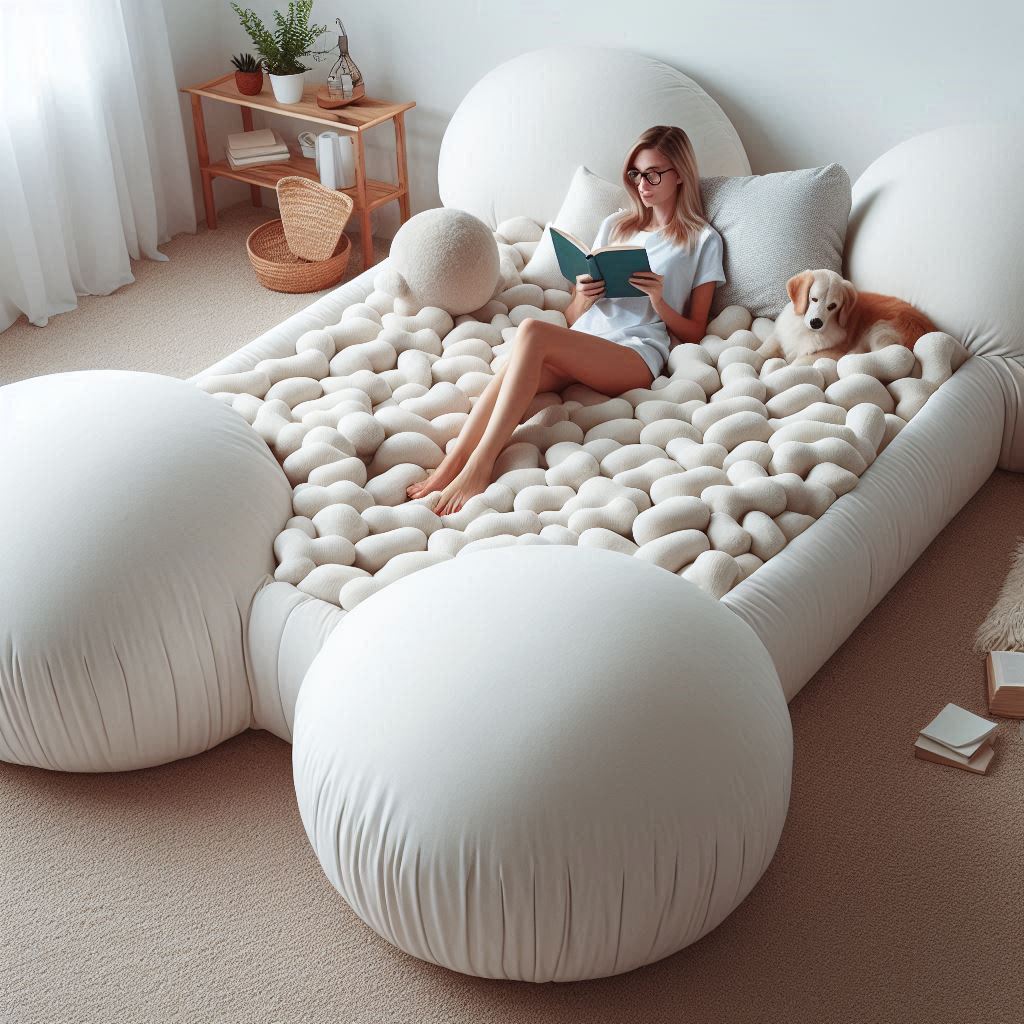
In recent years, the concept of the floor bed has gained popularity among design enthusiasts and those seeking a minimalist lifestyle. This simple yet stylish approach to bedroom design offers both aesthetic and functional benefits, making it a compelling choice for modern living spaces. This article explores the floor bed phenomenon, its benefits, design considerations, and tips for incorporating this trend into your home.
What is a Floor Bed?
A floor bed is a type of bed that is placed directly on the floor, without the use of a traditional bed frame or box spring. It typically consists of a mattress or a low-profile foundation that rests on the floor. This design choice is inspired by various cultural practices and contemporary design trends, emphasizing simplicity and functionality.
- Design Origins:
- Cultural Influences: The concept of floor sleeping has historical and cultural roots in various parts of the world. For instance, Japanese futons are traditional bedding that is rolled out on the floor and stored away during the day. Similarly, Scandinavian design often incorporates low-profile beds as part of a minimalist aesthetic.
- Modern Adaptation: In contemporary interior design, the floor bed has been adapted to suit modern preferences for clean lines, simplicity, and a connection to nature.
- Types of Floor Beds:
- Platform Beds: Low-profile platform beds with a minimal frame that sits close to the ground can be considered a type of floor bed. These beds often have a sleek design and are an alternative to traditional high bed frames.
- Mattress on the Floor: For a more straightforward approach, some people opt to place a mattress directly on the floor, often using a thin or low-profile mattress to maintain a clean look.
Benefits of a Floor Bed
- Aesthetic Appeal:
- Minimalist Design: Floor beds align well with minimalist design principles. They create an uncluttered look, allowing other elements in the room, such as artwork or architectural features, to stand out.
- Space Optimization: By eliminating bulky bed frames, floor beds can make a room appear more spacious and open. This can be particularly advantageous in smaller living spaces.
- Comfort and Functionality:
- Natural Sleep Position: Sleeping close to the ground can offer a more natural sleep position for some people, potentially improving comfort and reducing strain on the body.
- Easy Access: Floor beds can be easier to get in and out of, especially for individuals with mobility issues or those who prefer a lower sleeping surface.
- Temperature Regulation:
- Cooler Sleep Environment: Floor beds can provide a cooler sleeping environment, as they are closer to the ground and away from warmer air pockets that may be present in traditional elevated beds.
- Cost-Effectiveness:
- Affordable Option: Without the need for an elaborate bed frame or box spring, floor beds can be a more cost-effective choice. This can be especially beneficial for those on a budget or looking to invest in other aspects of their home.
Design Considerations for Floor Beds
- Room Layout:
- Space Planning: When incorporating a floor bed, consider the overall layout of the room. Ensure there is ample space around the bed for ease of movement and accessibility.
- Room Aesthetics: The design of the floor bed should complement the rest of the room’s decor. Choose colors, materials, and styles that align with your desired aesthetic.
- Mattress Selection:
- Comfort and Support: Select a mattress that provides adequate support and comfort. Memory foam, latex, and hybrid mattresses can all be suitable options for floor beds.
- Thickness: Consider the thickness of the mattress. Thinner mattresses or those designed for floor use can enhance the overall look and feel of the bed.
- Bedding and Accessories:
- Bedding Choices: Use bedding that enhances the floor bed’s appearance. Layering with plush blankets, decorative pillows, and fitted sheets can create a cozy and inviting look.
- Additional Elements: Incorporate rugs or mats underneath the mattress to add texture and warmth. This can also help protect the floor and provide a more comfortable surface.
Practical Tips for Maintaining a Floor Bed
- Regular Cleaning:
- Dust and Allergens: Floor beds can accumulate dust and allergens more readily than elevated beds. Regular cleaning and vacuuming of the mattress and surrounding area are essential for maintaining a clean and healthy sleep environment.
- Mattress Care: Consider using a mattress protector to safeguard against spills and stains. This can help prolong the life of the mattress and keep it in good condition.
- Ventilation:
- Airflow: Ensure proper ventilation around the mattress to prevent mold and mildew growth. Avoid placing the mattress directly on a damp or humid floor and consider using a moisture-absorbent layer.
- Seasonal Adjustments:
- Temperature Control: Adjust bedding and mattress covers according to the seasons to ensure comfort. In colder months, use thicker bedding or additional layers to stay warm.
Conclusion
The floor bed is a versatile and stylish option for modern living spaces, offering a minimalist aesthetic and practical benefits. Its design, rooted in cultural practices and contemporary trends, provides a unique approach to bedroom decor and comfort. By considering design elements, mattress selection, and practical maintenance, you can successfully incorporate a floor bed into your home and enjoy its many advantages. Whether you’re drawn to its simplicity, space-saving qualities, or natural sleeping position, the floor bed represents a thoughtful choice in modern interior design.







